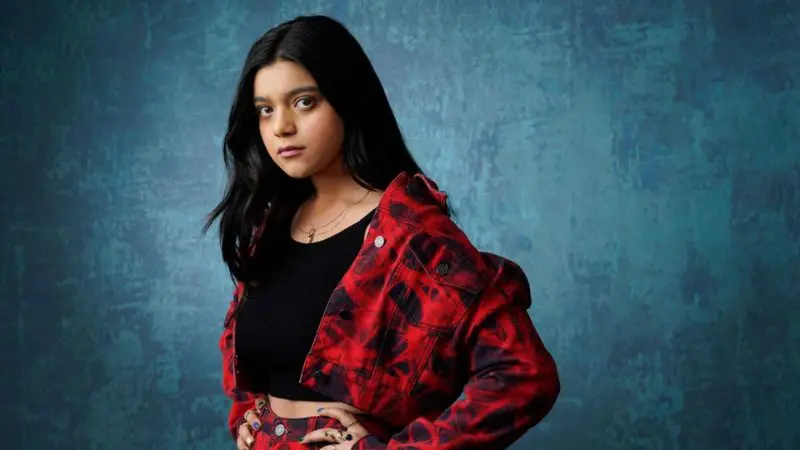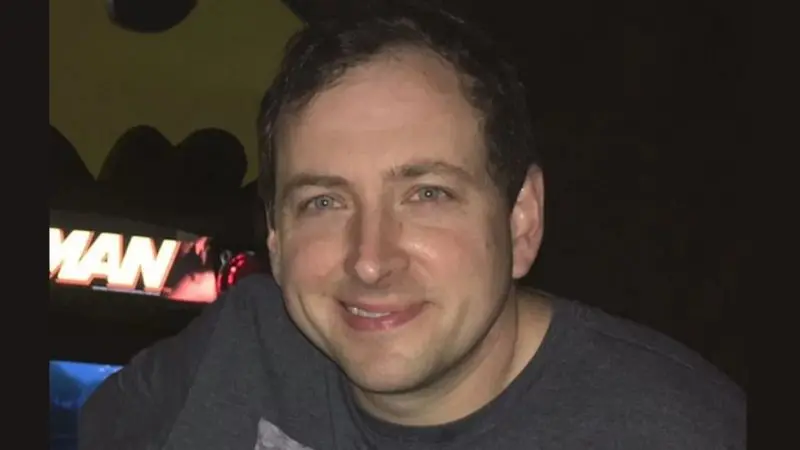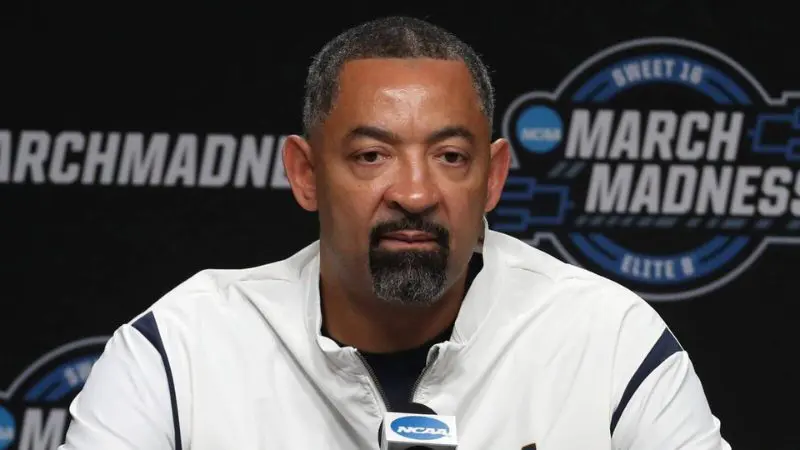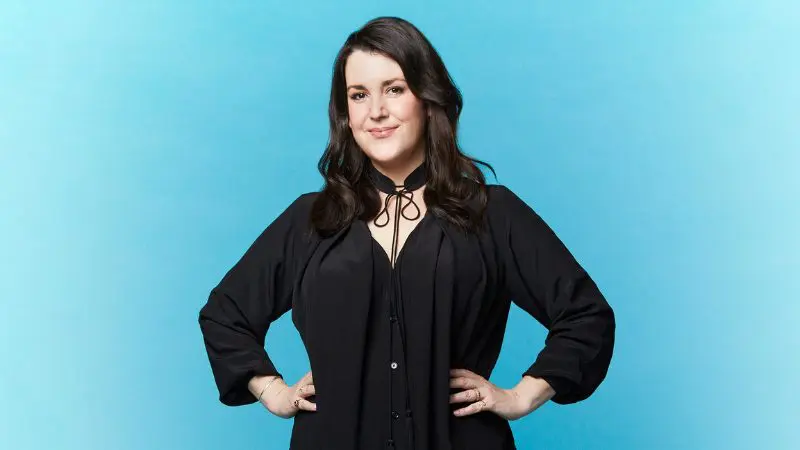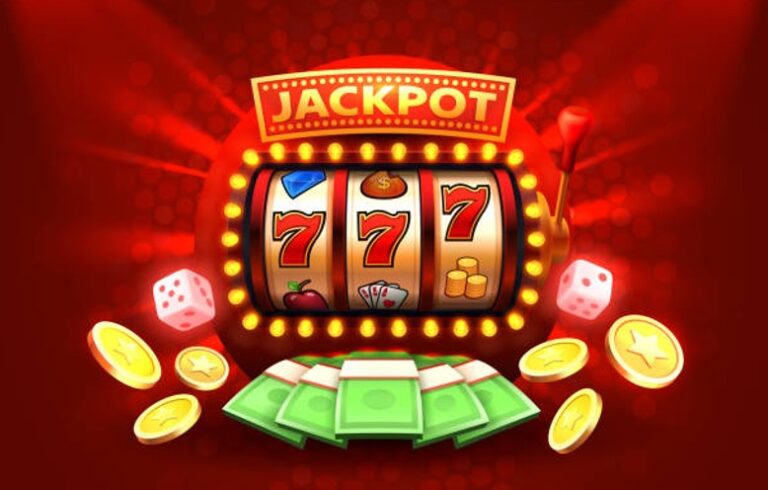Rumors have been swirling around on Twitter that Bryce Dallas Howard’s posterior was digitally reduced in size on a Jurassic World promotional poster. A viral tweet showcased a side-by-side comparison of an image from the movie’s poster and another from Howard’s red carpet appearance, with a noticeable difference in curvature.
Garnering widespread reactions and jokes about being “robbed” of the actress’s true figure, the tweet amassed over 12,000 retweets and 186,000 likes. But was there really any Photoshop intervention, or was this simply a case of natural body changes over time?
Table of Contents
Key Takeaways
- Twitter claims of Photoshop use in Bryce Dallas Howard’s Jurassic World poster.
- A comparison of images from the poster and events reveals a more pronounced curvature in the latter.
- Over 12,000 retweets and 186,000 likes on the original tweet.
- Newsweek’s investigation suggests natural body changes, not digital alteration.
- The importance of recognizing and embracing natural changes in our bodies.
The Viral Debate Over Bryce Dallas Howard’s Poster Image

A heated debate ignited on Twitter after a user suggested that Bryce Dallas Howard’s butt was downsized in the Jurassic World movie poster. Accompanying a comparison image, the user’s commentary insinuated a deliberate alteration to appease certain beauty standards.
The tweet instigated discussions about body changes and the frequent misconception of Photoshop use, with many emphasizing the natural fluctuation in an actor’s physique for various roles. The social media debacle underscored the quickness of the Internet community to spread misinformation and objectify women.
Twitter users wasted no time in voicing their opinions on the Bryce Dallas Howard butt controversy, debating whether the difference in her appearance was a result of digital manipulation or an entirely natural phenomenon.
Some users criticized Hollywood’s unattainable beauty standards and the media’s tendency to alter images, while others stood by the belief that body changes are common for actors, especially between movie roles.
“It’s ridiculous how quickly people jump to conclusions about Photoshopping. Bodies change, and actors transform for roles. Not everything is what it seems.”
- Understanding the natural fluctuations of an actor’s physique
- Questioning the genuine intent behind digital alterations
- Recognizing the harmful effects of body objectification
As the viral debate raged on, the shared images garnered thousands of Twitter reactions ranging from jokes and memes to thoughtful commentary on the effects of unrealistic beauty standards on women.
| Characteristic | Movie Poster | Red Carpet Appearance |
|---|---|---|
| Curvature | Less pronounced | More pronounced |
| Context | During Jurassic World promotion | Approximately one year after the film’s release |
| Body changes | Natural fluctuations in physique | Possible weight gain for roles |
With the Twitter reactions shining a light on the assumptions surrounding image alterations and body changes, it became evident that society’s eagerness to scrutinize women’s appearances ultimately contributes to the culture of objectification.
The conversation surrounding the Bryce Dallas Howard butt controversy highlights the need for a shift in mindset, embracing both the natural changes that occur over time and respecting the diversity of body shapes and sizes.
Tackling the Photoshop Rumors: A Timeline Perspective

As claims of Photoshop manipulation swirled around Bryce Dallas Howard’s Jurassic World poster, a holistic examination of the situation was necessary to put the rumors to rest. By scrutinizing the timeline of events, we can gain a better understanding of the natural body changes that took place and debunk the Photoshop rumors.
The Role of Time in Body Changes
Newsweek verified that the curvier photo, which sparked the online debate, was taken at an event approximately ten months after the movie’s release. Furthermore, it’s important to remember that the film’s production had been completed even earlier.
This revelation contradicts the Photoshop speculation and confirms that the physical differences observed were a result of natural changes over time, such as Bryce Dallas Howard’s weight fluctuation.
Weight gain or loss is a common occurrence for actors, who often undergo body transformations to better represent their characters.
Black Mirror’s Influence on Howard’s Physique
Around the same time that the curvier photo was taken, Bryce Dallas Howard had just portrayed a character in the Black Mirror episode “Nosedive,” where she gained over 30 pounds for the role. Themed around body shaming and societal status obsession, it’s quite plausible that the weight she gained for the part was still present during the event in question.
- Weight gain preparation for Black Mirror role
- Ten months lapse since Jurassic World release
- Taken at the event, curvier photo emerges
This additional context further dismantles claims of Photoshop tampering for the Jurassic World poster, shedding light on how easily misconceptions can spread.
Through understanding the chronological progression of events and considering the nature of bodily changes, we learn that natural evolutionary processes account for Bryce Dallas Howard’s physique in the controversial images.
Body Image in Hollywood: Expectations vs. Reality

The discussion of body image within Hollywood recognizes an established agreement on an admirable body type, which isn’t necessarily reflective of reality or substance. In the light of social media and tabloid culture, celebrity weight changes are often scrutinized by the public, fueling unreasonable industry expectations.
The controversy over Bryce Dallas Howard’s Jurassic World poster underscores this dilemma, questioning the expectations of Hollywood versus the authenticity of real human bodies.
Bryce Dallas Howard herself has spoken out against the superficial nature of these Hollywood body image standards, noting the detrimental effects they have on individuals, especially women.
In an industry where actors are often expected to conform to these standards or face criticism for deviating from them, it’s crucial to challenge these expectations and focus on promoting realism and diversity in body types.
“Instead of trying to slim down to fit in, we need to embrace our natural forms and encourage a more inclusive and authentic representation of beauty.”
It’s important to understand that people’s bodies fluctuate for various reasons, including the preparation for and transformation between different roles. Here are some examples of actors who have undergone significant weight changes for film roles:
| Actor | Role | Weight Change |
|---|---|---|
| Christian Bale | The Machinist | Lost 62 pounds |
| Charlize Theron | Monster | Gained 30 pounds |
| Jared Leto | Chapter 27 | Gained 67 pounds |
| Matthew McConaughey | Dallas Buyers Club | Lost 47 pounds |
The recognition of these changes as an inherent part of an actor’s profession contributes to a more nuanced understanding of the realities behind the images we see on screen.
By challenging the unrealistic Hollywood body image standards and embracing the natural changes occurring in people’s bodies, we can pave the way for a healthier and more inclusive perspective on beauty and physique.
How Social Media Fuels Body Stereotypes

In light of her experience with the Black Mirror episode, Bryce Dallas Howard has publicly addressed the topic of body image, critiquing the collective fixation within our culture. She expressed the opinion that striving for a certain body type becomes an oppressive force and a distraction for women.
Her observations suggest that societal conventions fostered by social media and the emphasis on physical appearance serve to suppress individual authenticity and potential.
Bryce Dallas Howard’s Insight on Authenticity and Oppression
Bryce Dallas Howard’s insights into the relationship between body image and oppression bring attention to a significant issue involving our perception of beauty standards.
Social media platforms often contribute to the perpetuation of these stereotypes, encouraging women to conform to a specific mold. This phenomenon not only promotes unrealistic body expectations but can also result in feelings of inferiority and self-doubt.
“Striving for a certain kind of body that’s just not in the cards for us genetically or otherwise can become an oppressive force and a massive distraction for women.”
It is essential to recognize the role of social media in perpetuating harmful body image stereotypes, and, as Bryce Dallas Howard suggests, encourage a shift towards promoting authenticity and individuality instead.
- Understanding the negative impact of social media body stereotypes on an individual’s mental health
- Acknowledging the unrealistic nature of many beauty standards promoted by social media
- Supporting the celebration of authentic and diverse body types
- Encouraging open dialogue about body image and self-esteem
| Impact of Social Media | Aspects to Address |
|---|---|
| Perpetuation of harmful body image stereotypes | Promotion of authenticity and individuality |
| Feelings of inferiority and self-doubt | Acknowledgment and celebration of diverse body types |
| Negative impact on mental health | Open dialogue about body image and self-esteem |
By addressing the social media-driven promotion of body stereotypes and women’s oppression, we can work towards fostering a more inclusive and accepting environment in which individual authenticity is celebrated, rather than diminished or suppressed.
FAQ

Was Bryce Dallas Howard’s butt altered in the Jurassic World poster?
Newsweek’s analysis suggests that Bryce Dallas Howard’s posterior was not digitally altered in the Jurassic World poster. The differences in appearance can be attributed to natural body changes over time.
What sparked the debate over the Jurassic World poster image?
A tweet went viral claiming that Bryce Dallas Howard’s posterior was downsized in the promotional poster for Jurassic World, comparing it to a photo taken from a red carpet event. The tweet sparked debates over potential Photoshop alterations and body standards in Hollywood.
How did the role of time contribute to debunking the Photoshop rumors?
Newsweek’s investigation revealed that the curvier photo was taken almost a year after the film’s release, suggesting the differences were due to natural body changes, such as weight fluctuation, rather than digital manipulation.
What impact did Bryce Dallas Howard’s role in Black Mirror have on her physique?
Bryce Dallas Howard gained over 30 pounds for her role in Black Mirror, which explored themes of body shaming and social status obsession.
The weight gain may have been still present during the event where the curvier photo was taken, further disproving claims of digital alteration in the Jurassic World poster.
How do body image expectations in Hollywood differ from reality?
Hollywood often perpetuates a narrow and unrealistic ideal of an “admirable” body type that does not necessarily reflect the diversity and authentic beauty of human forms.
Actors may experience changes in physique for various roles, demonstrating that natural fluctuations in appearance are normal and should not be scrutinized or altered.
How does social media contribute to body stereotypes and women’s oppression?
Social media platforms can fuel body stereotypes by perpetuating images of unrealistic and narrowly defined body ideals. Bryce Dallas Howard, who has spoken about this issue, believes that these expectations can become an oppressive force that distracts women from embracing their authentic selves and achieving their full potential.
Conclusion
The controversy surrounding Bryce Dallas Howard’s Jurassic World poster serves as a prime example of societal issues related to unrealistic body standards and the assumption of digital enhancement.
Actor lives are often littered with controversies such as these, which makes it increasingly difficult to survive the harsh environment of Hollywood. If you would like to read more about this topic, check out our article about Amber Heard.
By examining the natural course of an actor’s body through differing roles and the passage of time, we can gain a genuine appreciation of the authenticity of human forms.
Addressing body image misconceptions requires acknowledging the resiliency against stereotypes that have been deeply ingrained in our culture. We must challenge the conventional definition of attractiveness and embrace the natural changes in physical appearance as they come.
It is essential for us to recognize that fluctuations in physical appearance are simply an inherent part of life, rather than anomalies to be scrutinized or altered. In doing so, we can inspire a collective shift in perception that celebrates all body types and encourages self-acceptance in everyone.
Related Posts:
- Juwan Howard Net Worth 2024 | Earnings, Career, Bio & Family
- Hottest Countries in the World 2024: Chasing Sunsets Guide
- Exploring the World’s Smartest Animals by IQ
- 30 Smallest Countries in the World in 2024 (by…
- 20 Smartest Animals in the World - Which One Has the…
- Explore Penis Size by Country 2024: World's…


